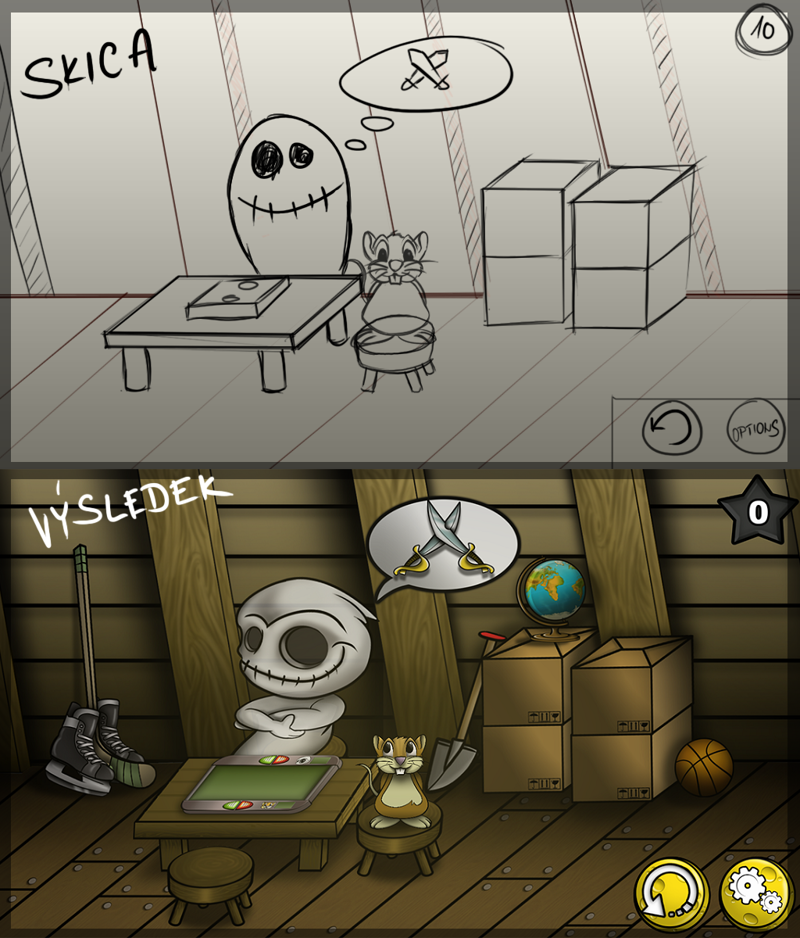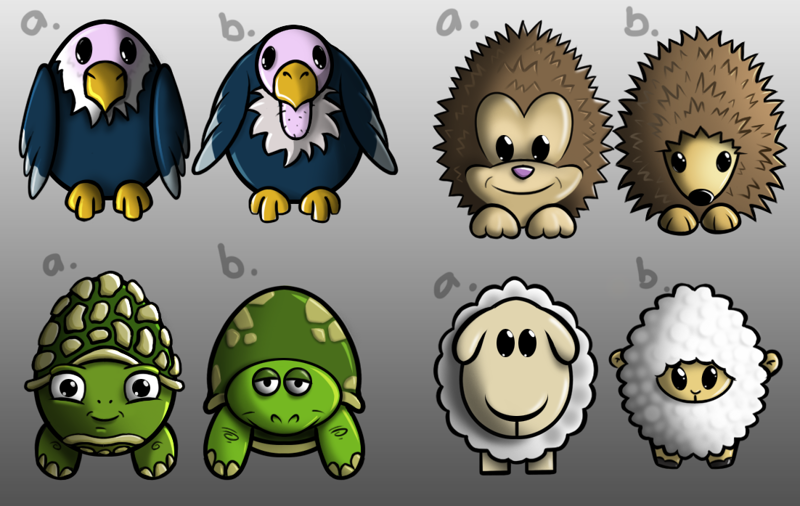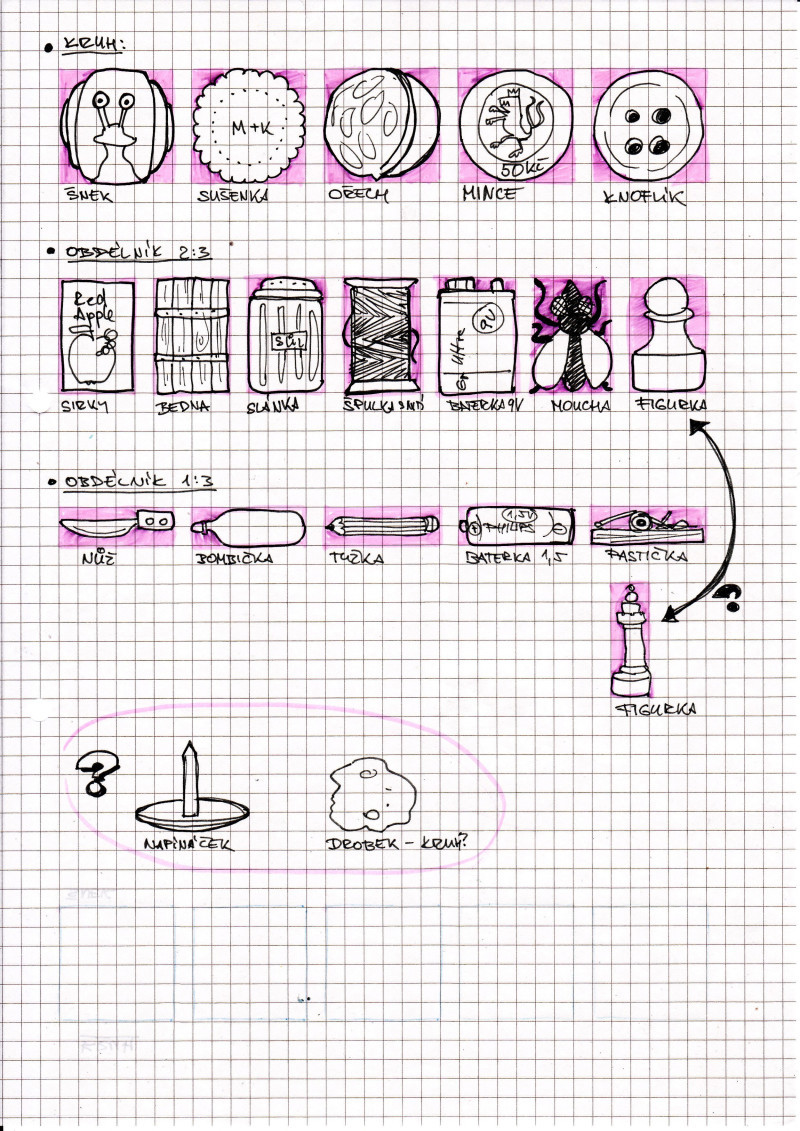Creating the Game II: From Idea to Documentation
In last episode of our series originally created in collaboration with Bonusweb we introduced you our motives and beginning as game developing studio. The text below will show our approach to game design itself. Enjoy!

It is necessary to constantly keep in mind that your game is not just about your dreams. You have to consider various factors such as budget, time. And some „marginalities“ like own knowledge and experience. That is why we didn´t decide for epic MMO to be our debut. Rather we started with small puzzle game Save the Snail.
Once Upon a Time… Idea
Idea is behind everything and every idea can be valuable. First rule, if you have something in your head it does not count. That is why we have shared document where everyone can write his „brainstorms“, concept or story ideas and so on. After some time all team meet to discuss and select concept with aim to bring it into reality. It strongly depends on team members preferences and if it the concept is still actual for game market.
We have to very often deal with the fact that some ideas someone already made. And some of these realizations are awesome but without any significant response from audience. This is the reason why we spend much time to analyze competitors (or I should rather say colleagues from game industry :-) ), potential target groups etc. We usually start by questions like: Did somebody release something like this? If yes (and this is the answer unfortunately almost every time), what we like about it and what would we improve? Who are the players and are we ourselves part of community of this specific game? At least on potentially?
And now back to reality of our team. Considering skills, experience and our technology is essential for creating the game (but we have mentioned it before). And last but not least, you have to work on time management, budget and monetization model. Development is not cheap and there is not many (if any at all) studios which can afford create games without return of investments.
Behold! Design Document
Next challenge accepted. How to bring the above in complex concept and describe it in design document the most precisely? It should include just everything and as the most concrete as possible.
You can download many tutorials and templates which indicate how to build up design document. Most of them are adapted for huge projects. Therefore we use ordinary Google Docs file share among the whole team. Access to the most actual and clarify information is crucial. For example our design document for World of Cheese (which is just “ordinary” children adventure) has 64 pages…
First pages summarize facts from previous research – competitor´s games, their strongs, weaknesses etc. Main part of introduction consists of detailed description of our target group with all its characteristics related to topic. This is the base for creating of “persona” – some kind of model player of our game. Just one example:
Jacob is ten year old schoolboy. He is attracted by tablet of his parents but they borrow it just and only under the supervision. Parents also choose which games can Jacob play. They try to select games with educational impact on their son.
Next part is time plan. We do not define release deadline only (which is usually just approx. term) but mainly so called “milestones” – crucial points for next development. This is fundamental information for managing every task among the team. By the way, for managing tasks we use Assembla. In case of World of Cheese we set weekly milestones and long-term milestones (usually one for one month). Thanks this we could see if we are going to meet deadline or not. If no, we could effectively reorganize time-plan. But keep in mind that each change has some influence on your budget.
Another part of document relates with game itself. I mean the funnier part – story, characters and their description, levels and quests. So it is not just synopsis (brave mouse has to solve puzzles in rooms and find all cheese) but also how to pass each level.
Document includes drafts as well. You can compare draft with final realization of level just on the picture.
Probably you cannot see it on this picture, but the path to final design is long process. Even ideas are sometime rewrite during the development. Reason is simple – what looks and works pretty well on paper just doesn´t fit in game itself. Great quest is suddenly extremely boring or too easy or too complicated. And you have to also keep in mind limits of technology and such triviality like screens of devices.
Something Still Missing… Title!
Yep, creating a title of your game is something what seems to be the easiest think in whole process but the opposite is true. You can come up with catchy and informative title in few seconds but it can also take days and weeks of thinking.
There are plenty of expert advices and quack precepts, but you know, nobody will take this responsibility but you. When you create some title, you have to check if it is still available on market, if it is well to remember, felicitous, if it has the “call-to-action” aspect and few other things. Also check if your cool title is not under copyright or trademark protection (even common words like “saga” is disputable).
For example our upcoming game: our proposals sounded like Bakterus or Anatomy Defense. But we choose Defend Your Life. The question if it was right decision remains open. In fact, answer is in hands of players.
What Next?
So, game design is done. On paper. Now is time for visual part. That means that next article is going to take a deeper insight on work of our graphic designers. Stay tuned!
Alda Games, 11.03.2014 | Brno, Czech Republic
Other news
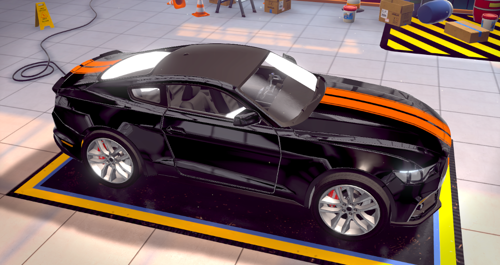
Garage Mania – Update Troubleshooting
Having issues with launching your game after an update? Try following the next steps to fix the problem and head back to the game.

Unite Amsterdam 2023 - Our visit
In November, our team attended the UNITE Amsterdam 2023 conference. We gained a wealth of new insights and experiences, and we are...
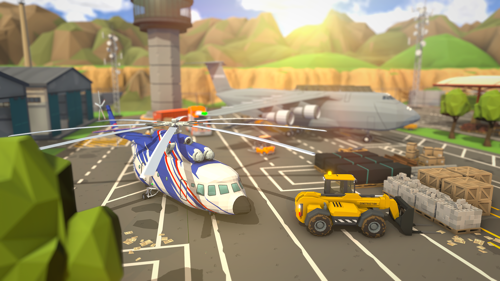
A guide to redeem Tycoon promocodes
On our Facebook page, promocodes are being posted each month. Here is a quick guide where to redeem them in the game to get the re...
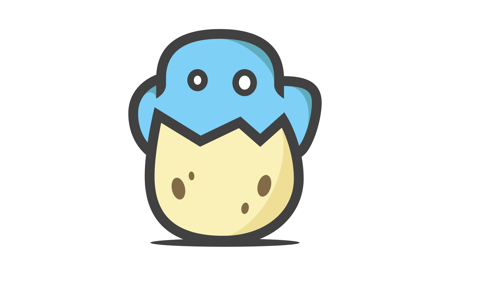
New bright website for bright future
It was inevitable and it is here - brand new webpage!


